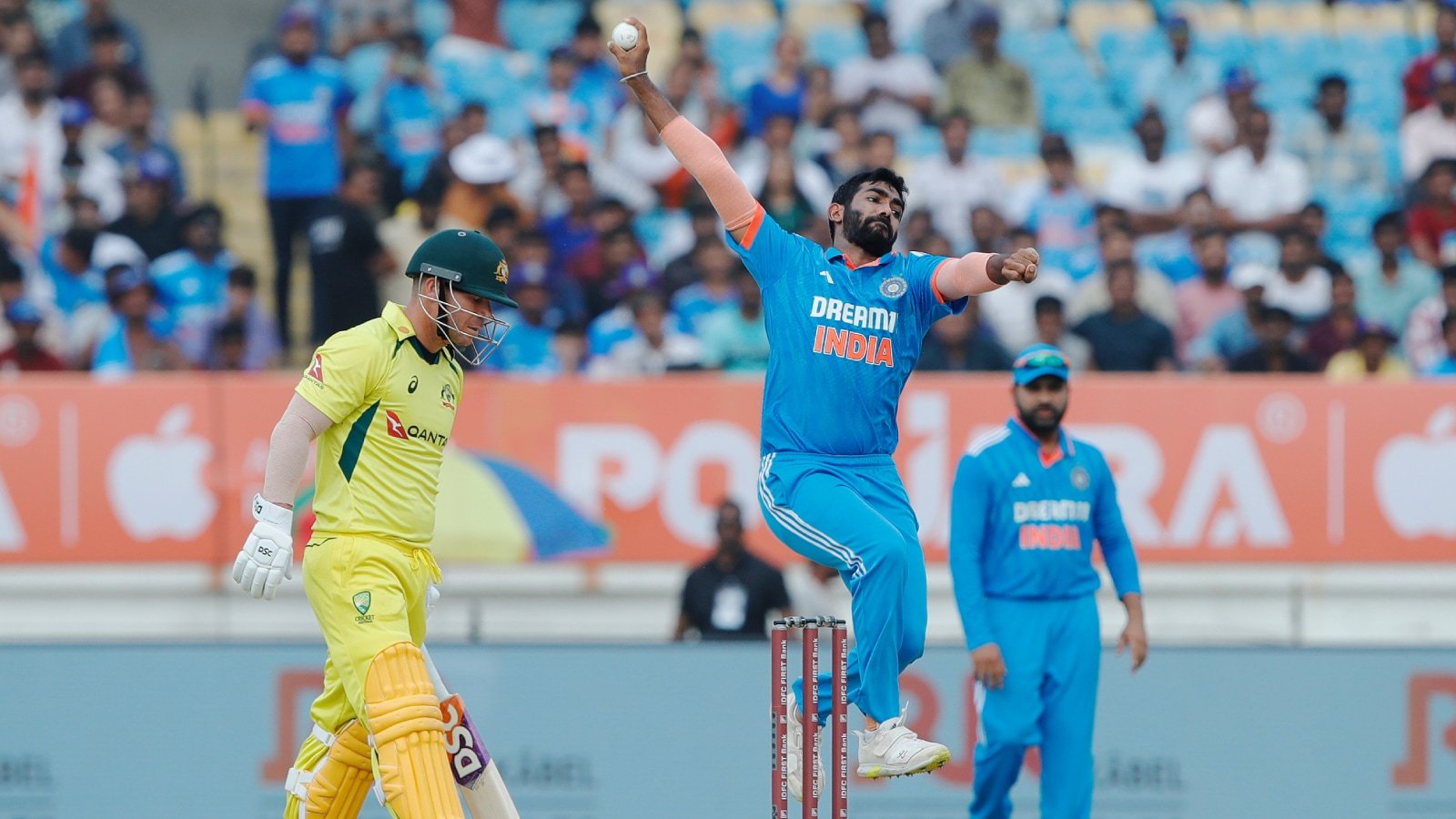While the likes of 1983 World Cup-winning captain Kapil Dev, chief selector and former pacer Ajit Agarkar, and Mohammed Shami all found places in the all-time top-five Indian ODI bowlers across different lists compiled by Aussie greats Glenn McGrath, Jason Gillespie, and Damien Fleming, it was Jasprit Bumrah whom all three rated as the number one Indian ODI pacer of all time. Currently playing in a three-match ODI series in Australia, Bumrah boasts 149 wickets in 89 matches at a strike rate of 30.7 and an economy of 4.59. McGrath rated Bumrah as ‘comfortably the number one’ among India’s ODI pace bowlers.
“For me you know, Bumrah has to be number one. Bumrah is just unbelievable. He’s got such a unique action, so different to anyone else in world cricket. It’s not a run-up or technique you would teach, because it does place a lot of stress on the body. Those last two steps as he powers into the crease are unbelievable. I think if you slow his action down, where he releases the ball is about a couple of feet closer to the batsman than most other bowlers, which is quite unique. But he found what works for him, and now it’s just about keeping his body strong enough to keep bowling day in, day out. His stats are unbelievable. I think he is comfortably number one,” McGrath shared on the YouTube show The Fast Bowling Cartel, hosted by the trio.
Notably, both McGrath and Gillespie omitted Zaheer Khan from their top fives, while India’s current selector Ajit Agarkar found a spot. The pacers’ respective records against Australia likely explain why. Zaheer Khan had a poor average of 46.39 against Australia, taking 23 wickets in 22 ODIs. In contrast, Agarkar averaged 28.41, claiming 36 wickets from 21 ODIs against the same opponent. Zaheer also had a less impressive record against Pakistan, averaging 40.85 from 23 games, while Agarkar averaged a slightly better 36.15 from 22 games. Khan only featured in the top-five list of Damien Fleming, who placed him fifth.
Like Gillespie, who based his metrics on a combination of strike rate, economy, and average, Fleming used similar criteria, which allowed Khan to earn a mention. Fleming’s list placed Bumrah at the top, followed by Kapil Dev, Javagal Srinath, Mohammed Shami, and Khan. “I am going with the fifth bowler Zaheer Khan. Great competitor, swung the ball early, and bowled in the death. At the fourth spot, I’m going for Mohammad Shami. I just love his action. For kids out there, if you want to mimic someone who’s so efficient, gets through the crease… he’s probably less than six foot and gets a steep bounce, but he’s so well skilled. And at three, Javagal Srinath. He led the attack and didn’t have a lot of mates on those wickets that were really barren back then. Number two, Kapil Dev. I used to mimic his action, big outswingers and a power hitter. And number one, Jasprit Bumrah has to be one of the greatest fast bowlers of all time. He’s a constant threat through every stage of 50-over cricket, isn’t he? Opening up or at the death. But in the middle overs, he’ll come on and get wickets, which we know is premium,” shared Fleming.
Gillespie, on the other hand, ranked Bumrah first, followed by Shami, Kapil Dev, Agarkar, and Srinath. “I looked through the numbers and the statistics and came up with the top 12 fast bowlers for each country. I added a little metric, a formula I use that is a combination of averages, strike rates, and economy rates. Javagal Srinath, with 315 wickets from 229 games, averaged 28 with an economy rate of almost four and a half—I thought he was an excellent bowler. Number four is the diminutive, smart little swing bowler Ajit Agarkar, who bowled deceptively quick and was very effective for India with 288 wickets from 191 games. And number three is the great Kapil Dev: 253 wickets from 225 games. He opened the bowling a lot, would swing the ball away, and a key for my metrics was his economy rate of 3.71. That’s absolutely elite. Number two, and first among modern-day players, is Mohammad Shami. And number one is Jasprit Bumrah: 149 wickets from 89 games, an average of 23.55, and an economy rate of 4.59 in the modern game is very, very good,” Gillespie shared.
McGrath placed Bumrah at the top, followed by Kapil Dev, Mohammad Shami, Ajit Agarkar, and Javagal Srinath. McGrath also recalled a unique habit of Srinath’s: “I put Javagal Srinath as my number five, you know, a great bowler. The thing I loved about Srinath was when he’d go back to fine leg. You know, when we go back there we’re tired, we’re a bit thirsty, so we have a big guzzle of water. He always thought that made him feel a bit heavy. So he’d have a drink of water, swish it around his mouth, and then spit it out, because he said he didn’t want to swallow it as it made him heavier. Just a little interesting thing with Srinath,” he recalled.




